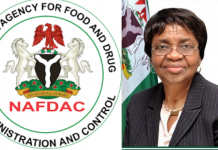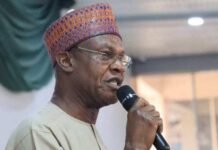The Federal Government has responded to the terrific hue and cry raised Nigeria’s rising debt profile saying the country is yet to even reach its debt ceiling of 25 per cent in total public debt stock to Gross Domestic Product (GDP).
It would be recalled that the former president, Chief Olusegun Obasanjo, had recently warned that Nigeria risked bankruptcy occasioned by continuous accumulation of debts by the government.
Speaking at a public function, he recalled that as at 2015, the country’s total external debt was about $10.32 billion.
He lamented that the coutry’s external debt profile had, over some four years, grown by as much as 700 per cent to N24.947 trillion ($81.274 billion) as at March 2019.
“As at 2015, total external debt was about $10.32billion. In four years, our external debt grew to N24, 947 trillion or $81.274 billion.
“To service this current level of indebtedness, we must commit at least 50 per cent of our foreign earnings, such a situation tells about an impending bankruptcy because no entity can survive while devoting 50 per cent of its revenue to debt servicing.
“In 2018, total debt servicing cost took over 60 per cent of government revenue. As if this is not bad enough, we are currently seeking to add another $29.6 billion loan to our already overburdened debt portfolio.
“Our current budget, out of which we are spending 25 per cent to service debt is not our total earnings, a lot of it is also borrowing. We are borrowing to service what we have borrowed and yet we are borrowing more,” he said.
But addressing a press conference in Lagos yesterday, the minister of information and culture, Mr. Lai Mohammed said there had been misrepresentation of facts about Nigeria’s public debts.
“Nigeria’s total public debt stock in 2015 was $63.80 billion, comprising $10.31 billion of external debt and $53.49 billion domestic debt. By June 2019, the total debt stock was $83.883 billion, made up of $27.163 billion of external debt and $56.720 billion domestic debt.
“It is therefore not correct to say that Nigeria’s external debt alone is $81.274 billion,” he said.
Mohammed said there was no cause for alarm because “Nigeria has a debt ceiling of 25 per cent in the total public debt stock to gross domestic product which it has operated within.
The ratio for December 31, 2018 and June 30 2019 were 19.09 per cent and 18.99 per cent respectively.
“The debt service to revenue ratio has however been higher than desirable, hence the push by the government to diversify the economy and increase oil and non-oil revenues significantly. The government is also widening the tax base to capture more tax-paying citizens,”he said.
The minister pointed out that in the face of massive infrastructural decay no responsible government will sit by and do nothing.
He said “this administration’s borrowing, therefore, is aimed at revamping our infrastructure, including roads, bridges, railways, waterways and power, to help unleash the potential of the nation’s economy.
“The loans for the educational sector will contribute to the development of our human capital while the loans for the agricultural sector will help the move to diversify the economy.”
On the economy, the minister said it had witnessed a strong performance, building on the steady recovery seen since the last recession.
“In 2019, the Nigerian economy grew atan average rate of 2.2 per cent over the first three quarters, compared to 1.7 per cent over the same period in 2018.
“Both the oil and non-oil sectors performed considerably better in 2019 than in 2018. The oil sector grew at an average of 4 per cent over the three quarters, compared to 2.4 per cent in 2018, while the non-oil sector grew by 2 per cent, compared to 1.7 per cent in 2018.
“The average daily oil production level rose to its highest in the last 3 years, reaching 2 million barrels per day (mbpd) in 2019, compared to 1.8 mbpd in 2016, and 1.9 mbpd in both 2017 and 2018.
“In particular, in the third quarter of 2019, the major growth drivers were: information and communications, agriculture, mining and quarrying, transportation & storage as well as manufacturing, all of which have seen considerable focus by government.
“In the third quarter of 2019, a total of 34 economic activities witnessed positive expansion, same as in 2018.
“The trends indicate that overall macroeconomic stability is being achieved, with inflation rate steadily trending downwards.
“Year-on-year headline inflation rate declined steadily from 15.1 per cent in January 2018 to 11.9 per cent in November 2019.
“Year-on-year core inflation rate slowed from 12.1 per cent to 9 per cent between January last year and November this year.
“Year-on-year food inflation rate decreased from 18.9 per cent in January 2018 to 14.5 per cent in November 2019.”




























































